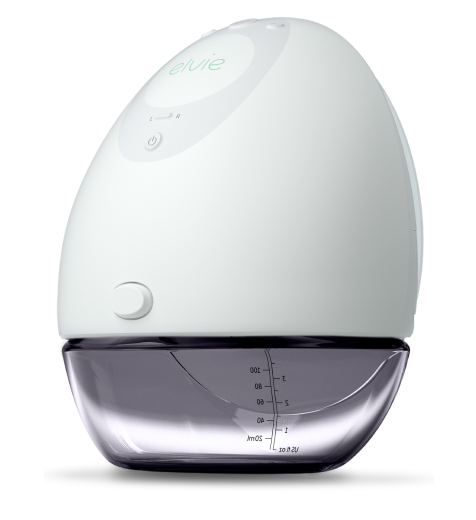This blog was updated 5/23/24.
From the moment that little indicator on your pregnancy test says ‘baby on board’, your life will never be the same. After the initial excitement, you may find that your head is swimming with endless possibilities — as well as the seemingly endless preparations!
In between attending hypnobirthing classes and searching for the ideal car seat for your new arrival, you may have been umming and erring on which kind of breast pump is best for you. Now, as fun as it is to surf the web and read through endless mommy forums, sometimes it can just become pretty damn overwhelming when trying to choose between breast pumps. That’s where we come in.
Read on as we delve into the world of doubles, singles, and silicone breast pumps — and hopefully, help you find the best choice for your feeding journey.
Why is a breast pump a must-have?
Pumping milk once had a certain stigma of making us feel more ‘cow’ than carefree. Now, you can blame that on decades of poor pumping evolution and development (if it’s not to do with erectile dysfunction, it gets ignored — amirite?) but the good news is we’ve moved on from archaic milk machines to technology that makes the whole process less, well, sucky.
Even if you plan to exclusively breastfeed — which is recommended by the WHO for the first 6 months of your baby's life (1) — having a breast pump in your ‘motherhood arsenal’ can be handy. Why? Well, for one thing, it can increase milk supply (2), especially in those early days. Breast milk is produced on a supply and demand basis, so pumping for just a couple of minutes after nursing, or adding the occasional pumping session after your baby has finished can ‘up’ your milk supply.
There’s also the convenience of pumping and storing milk so other caregivers can feed the baby during those less-than-ideal times. After all, you don’t have to be part of the 2AM club every night. And if you ever want to paint the town red (or beige, if we’re being real) or spend an afternoon away from baby, a breast pump gives you the freedom to do so.
Of course, if you’re planning on breastfeeding after returning to work, you’ll want to keep a breast pump nearby to keep your milk supply up, have a milk stash in your home freezer, and relieve engorgement when you’re back doing those nine-to-fives.
Choosing a breast pump — manual vs electric
When it comes to hand pumping vs electric pumping, there are several factors to consider: how often you’ll be pumping, whether you’ll be an exclusive pumper or you’re going to pump occasionally, your milk supply, and so on.
Equally, it’s not simply a straight choice between a manual or electric pump, as each option comes with its own variations: for instance, do you opt for a single or double electric breast pump? Do you require a manual pump that you can wear in-bra when you’re out and about? There’s much to ponder.
So, manual or electric pump? Let’s explore each option so you can make an informed choice that’s right for your body and your bundle of joy.
The electric breast pump (we love it watts)
As the moniker suggests, an electric breast pump does the hard work for you and allows you to express milk quickly. Unlike a manual breast pump, once the cup is in place on your breast, it lets you express at a pace that you preset — saving you from aching hands or hard-to-maintain rhythms.
Electric breast pumps usually offer more options than manual breast pumps. For example, double or single-pump capacity (a double electric breast pump allows you to pump both breasts simultaneously), adjustable suction levels, and settings to mimic your baby’s pattern, breast milk history, pump tracking, and lots more.
Most electric pumps are mains-operated, but rechargeable battery-powered pumps (such as Elvie Pump) are ideal for expressing milk without keeping you tethered to a socket for hours.
One downside to a conventional electric pump is that it may be bulkier to transport — although there are lightweight options (cough) on the market. Some electric pumps that claim to be quiet actually fall short of the mark and make lots of noise, which can make it difficult to express discreetly or quietly — or when the baby is sleeping nearby.
The pros and cons of electric breast pumps
Electric breast pump pros:
Less effort than manual pumps
Faster than other methods of expressing milk, increasing the speed of milk production
Offer multiple settings, adding to your comfort
Provides more choice and versatility than manual pumps
Travel-friendly pumps offer hands-free flexibility
Electric breast pump cons:
Usually cost more than a manual breast pump
Noisier than a manual breast pump
More parts can make it fiddly to clean and sterilize
Mains-operated breast pumps are dependent on a plug socket, which could be difficult if you're out and about
Some options are less portable or lightweight
The manual breast pump (for the hands-on type)
The simplicity and convenience of a manual pump can be an ideal choice if you want to express milk for one feed a day or take an occasional break from feeding. Wearable silicone options like Elvie Curve can even be used while you’re feeding or pumping on the other breast, or whenever your breasts feel full.
With a manual pump, you’re able to control the rate of suction yourself — making the expression session feel natural and more like your baby’s sucking. That being said, with some manual pumps, regular squeezing is required to create a rhythmic vacuum that stimulates milk production. This can take up both of your hands until you get used to it, which can wear you out or make your hands ache. And unless the pump is explicitly ‘hands-free’ and can be worn in-bra, expressing milk on-the-go can be tricky — despite the portable size and weight of manual options.
However, if you choose to go manual, it can be an excellent low-cost option for occasional milk expression or something that can fit in your handbag, gym bag – any bag, really! If, however, you want to feed your baby solely with expressed milk, it’s worth your while to invest in a powerful, electric option.
The pros and cons of manual breast pumps
Manual breast pump pros
Less expensive than electric breast pumps and cost nothing to run after you've bought one (other than your precious time)
You control the suction rate so expression feels more natural
Very few parts make them easy to clean and sterilize
Compact, lightweight, and easy to carry around
Naturally quieter than conventional electric breast pumps
Manual breast pump cons
Controlling the pump yourself can make it difficult to get into a regular pumping rhythm
Manual pumps are generally slower and less powerful than electric pumps
Repetitive pumping can be tiring for your hands
Less discreet unless explicitly designed to be
Which breast pump is right for you?
Now that we’ve cleared up the main differences between an electric breast pump vs manual, let’s take a look at the devices we offer here at Elvie. Whether you’d prefer the convenience and power of an electric pump, or you’re happy to go hands-on with a manual pump, we’ve got a pump for you.


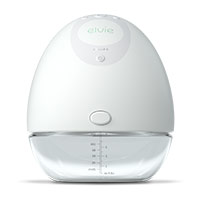
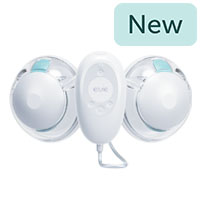
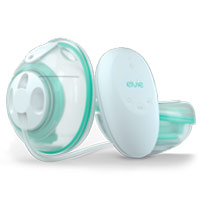
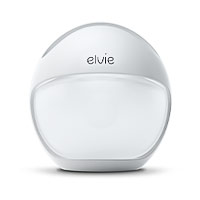
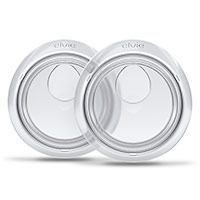
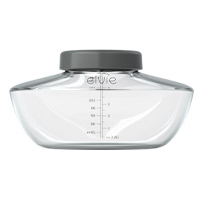
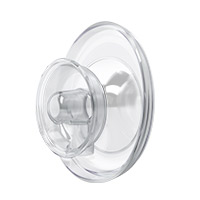

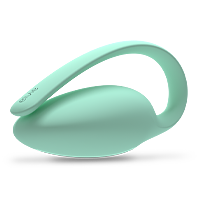
 7 minute read
7 minute read
